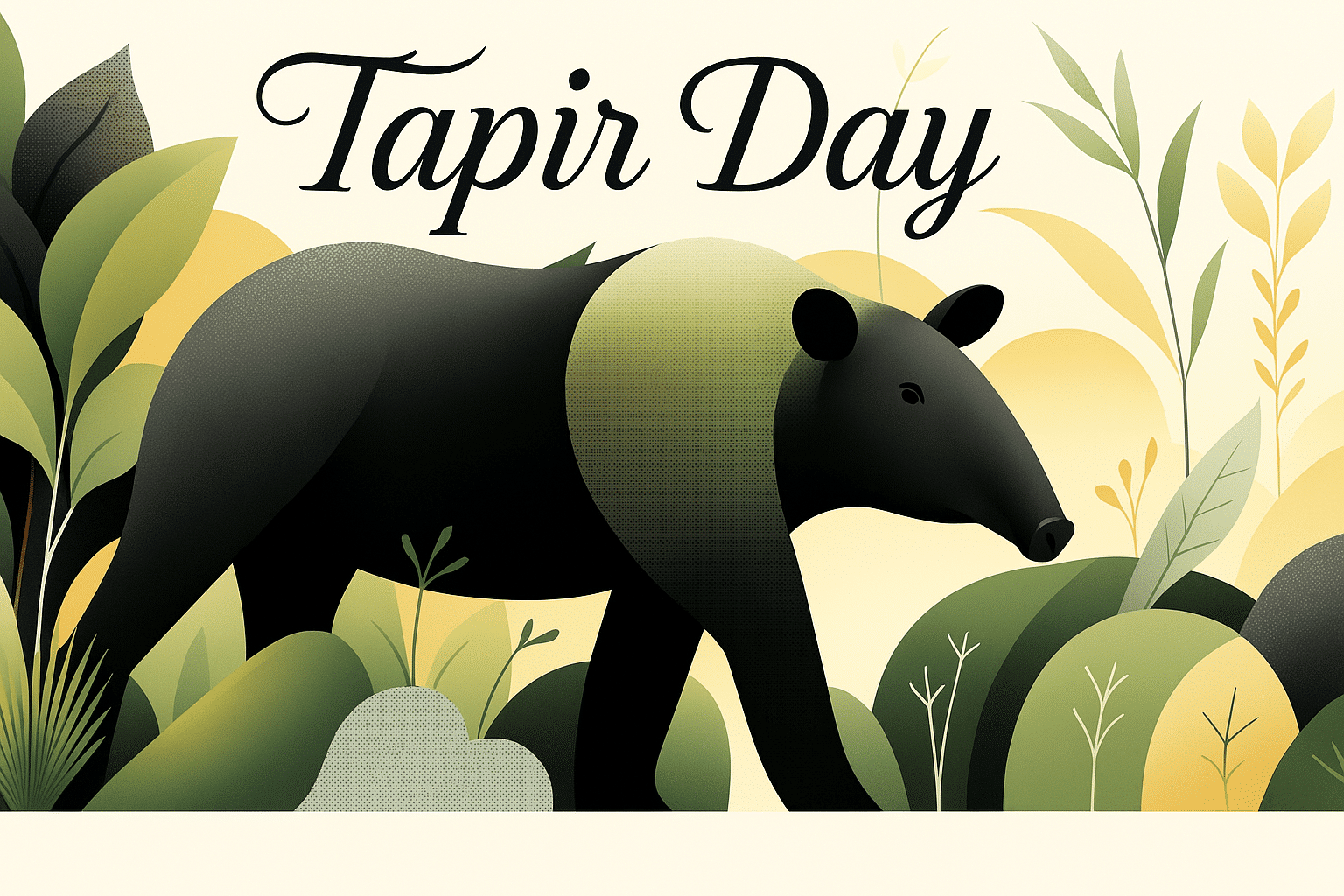What is World Tapir Day?
World Tapir Day is celebrated each year on April 27 and is recognized around the world. This day is dedicated to raising awareness for the four species of tapir;large herbivorous mammals that live in Central and South America, and Southeast Asia. Despite their size and ecological importance, tapirs are among the least known endangered animals.
The aim of the day is to highlight the threats they face, such as deforestation, illegal hunting, and habitat fragmentation. World Tapir Day invites people to learn more about these unique animals and take action to help preserve their future.
History and Origin
World Tapir Day was first launched in 2008 by tapir conservationists and wildlife advocates. The chosen date, April 27, honors the birthday of April the Tapir, a beloved Baird’s tapir who lived at the Belize Zoo. April became a symbol of awareness and education for her species.
Since its beginning, World Tapir Day has grown to include global events hosted by zoos, conservation groups, and schools. Through educational programs, social media campaigns, and fundraising initiatives, the day continues to amplify the message of tapir protection.
Who participates in World Tapir Day?
- Wildlife Conservation Groups: Organize projects and campaigns focused on tapir habitats and survival.
- Zoos and Sanctuaries: Host tapir-themed events, talks, and live demonstrations.
- Schools and Educators: Use the day to teach about biodiversity, ecosystems, and lesser-known endangered species.
- Artists and Designers: Create and share tapir-inspired works to promote awareness.
- Nature Lovers and the Public: Share stories, visit zoos, or donate to conservation causes.
Slogans and Themes
World Tapir Day emphasizes protection, education, and biodiversity. While there’s no fixed slogan, commonly used phrases include “Save the Tapirs,” “Protect Their Habitat,” and “Ancient Animals, Modern Threats.” Each year the theme highlights both the uniqueness of tapirs and the urgent need to protect their environments.
Colors, Symbols and Patterns
Colors:
- Black and White: Reflects the striking contrast of the Malayan tapir’s coloring.
- Brown and Forest Green: Symbolizes natural tapir habitats in tropical forests.
- Gray: Used in educational graphics and merchandise to represent the species neutrally.
Symbols:
- Tapir Icon: Used in logos and illustrations for campaigns and posters.
- Juvenile Tapir Markings: The striped and spotted coat of baby tapirs appears in children’s books and learning tools.
- Tapir Footprint: Used in activities and displays to connect visitors with wild tapirs.
Patterns:
- Camouflage-Inspired Textures: Refer to the dense jungle environments tapirs inhabit.
- Tapir Silhouettes: Seen in t-shirts, banners, and art celebrating the day.
- Vine and Leaf Motifs: Emphasize the forest homes where tapirs live and feed.
Most Used Hashtags
- #WorldTapirDay
- #SaveTheTapirs
- #TapirAwareness
- #TapirConservation
- #ProtectTapirs
How do you celebrate World Tapir Day?
- Visit a Zoo or Sanctuary: Learn about tapirs up close and support institutions that care for them.
- Join an Educational Workshop: Attend lectures or webinars on tapir biology and conservation.
- Create and Share Art: Make drawings or digital designs that raise awareness for tapirs.
- Donate to Conservation Groups: Support ongoing work to protect tapir habitats and species.
- Spread the Word Online: Post facts and images to raise awareness and use popular hashtags.
Why is World Tapir Day important?
Tapirs are ancient animals that have existed for millions of years. Despite their importance as seed dispersers and forest caretakers, they are disappearing quickly due to human activities. World Tapir Day gives attention to these quiet, shy creatures that are often forgotten in global conservation conversations.
Protecting tapirs also helps preserve the forests they call home. These ecosystems support thousands of other species. By raising awareness and supporting conservation efforts, World Tapir Day contributes to a healthier and more balanced planet.
Features
Contact Info
April 27: Tapir Day
Why do you keep falling for the same type?
Read the article Lovemaps: the hidden blueprint of our love.

